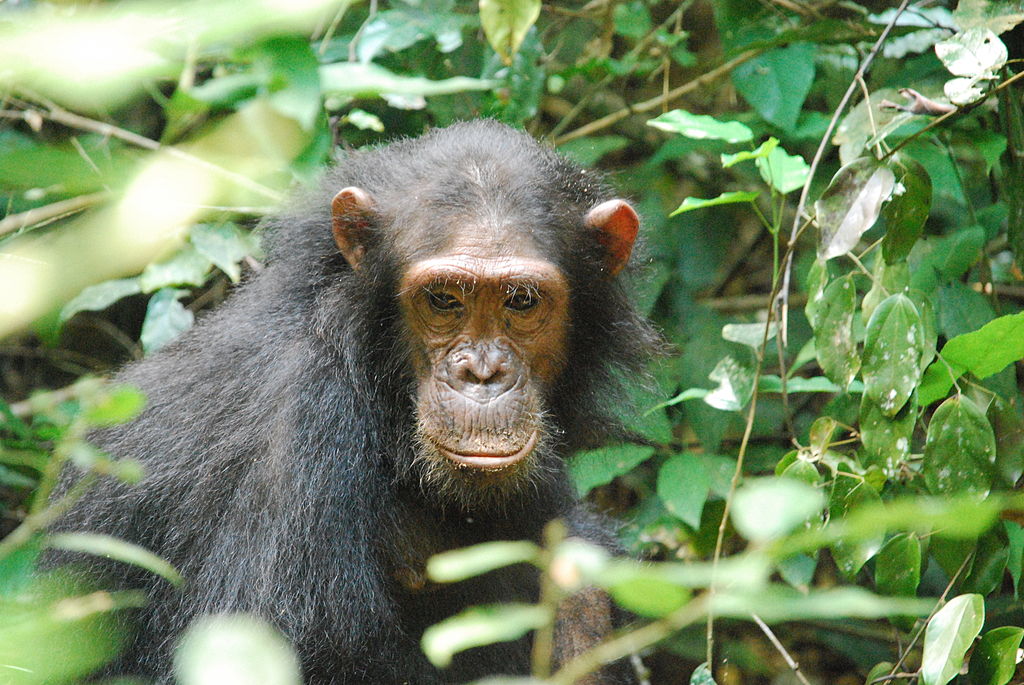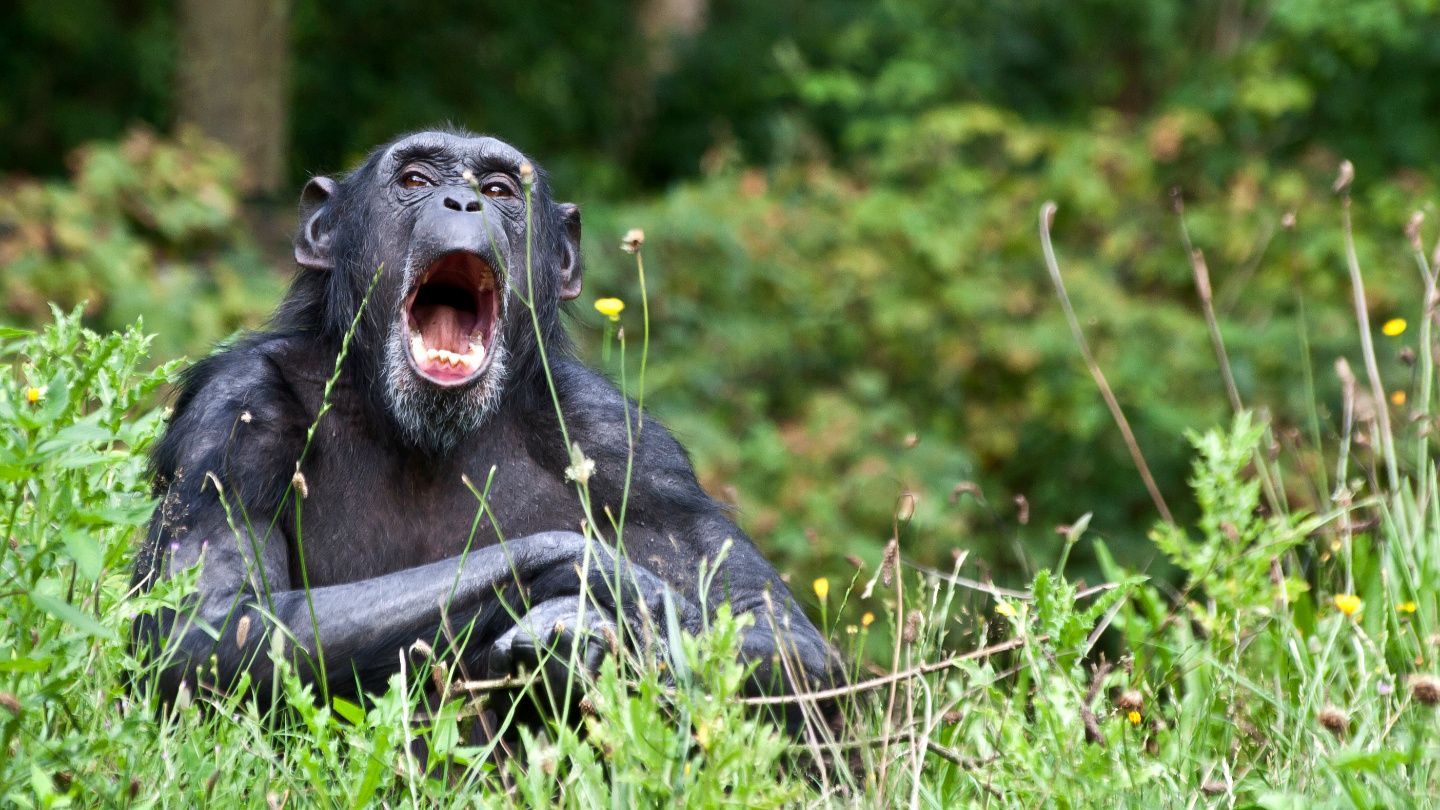What the Gombe Chimpanzee War taught us about human nature

- When a large chimpanzee community in Tanzania split apart, the two factions went to war with one another.
- Groups of male chimps would patrol the borders of their respective territories, brutalizing any intruder they came across.
- This marked the first instance conservationists saw wild chimps engage in coalition killing, but it would not be the last.
“For so many years, I had believed that chimpanzees, while showing uncanny similarities to humans in many ways, were by and large rather ‘nicer’ than us. Suddenly I found that under certain circumstances they could be just as brutal, that they also had a dark side to their nature.”
The excerpt above was taken from a book called Through a Window: My Thirty Years with the Chimpanzees of Gombe, written by primatologist Jane Goodall. Specifically, it was taken from a chapter titled “War.” In that chapter, Goodall describes her memories of and thoughts on one of the most horrific conflicts to have ever occurred in the animal kingdom: the Gombe Chimpanzee War.
Goodall first arrived at Tanzania’s Gombe Stream National Park with the intention of observing primates in their natural habitats. About 15 years into her studies, Goodall noticed that the park’s chimpanzee community — the so-called Kasakela community — had splintered into two distinct factions. The splinter community, consisting of six males and three females, moved into a different section of the park while the main community, now consisting of eight males and twelve females, stayed put.
Both factions guarded their new borders virulently, resulting in a number of coordinated, lethal altercations. During these altercations, the normally peaceful chimpanzees displayed exceptional levels of cruelty and brutality. In total, the war lasted four years and ended only when the splinter community had been completely eradicated.
The Chimpanzee War had major implications, both for Goodall personally and her academic community. Many of the chimps that lost their lives during the conflict were chimps Goodall had known closely; each had had a name, a face, and a personality. On the other hand, the war marked the first instance that primatologists observed chimps engaging in calculated, cold-blooded murder — a behavior that had previously been considered exclusive to man.
But just how human was the Chimpanzee War, really?
Inside the Gombe Chimpanzee War
The war began with the death of a chimpanzee named Godi. Godi, an adult male belonging to the splinter community, was feeding in the trees when he was ambushed by six Kasakela males. In her book, Goodall describes how one of the males grabbed Godi’s leg and threw him to the ground. The aggressors, in a state of “enraged frenzy,” pinned Godi down, beating and biting him for over ten minutes. Then, inexplicably, they scattered.
The aftermath wasn’t pretty. “Godi remained motionless for a few moments,” Goodall writes, “lying as his assailants had left him. He was badly wounded, with great gashes on his face, one leg, and the right side of his chest, and he must have been badly bruised by the tremendous pummeling to which he had been subjected. Undoubtedly he died of his injuries, for he was never seen again by the field staff.”

As the war progressed and patterns emerged, Goodall’s understanding of these “border patrols” improved. Since the 1970s, they have been observed not just at Gombe but at Mahale Mountains National Park as well. They occur in places where the territories of two distinct communities overlap. They are usually carried out by a group consisting exclusively of adult males although, on some occasions, adult females have been observed to partake in the raids as well.
When patrolling, these normally rambunctious animals are described by researchers as “uncharacteristically quiet.” They “often stop to listen intently, apparently for signs of other chimpanzees.” If no intruders are found, the party returns home in silence. If they do find one, however, they might stalk and brutalize the victim, often inflicting lethal wounds. The key word is “one,” as aggressors always gang up on single victims and rarely attempt to fight a rival group consisting of two or more chimps.
Of the dozen or so attacks that Goodall recorded, five resulted in death. Each of these fateful encounters lasted no more than ten minutes. All five victims were dragged, pinned down, beaten, and bitten. Crucially, Goodall noted that fights between members of separate communities tended to be far more brutal than fights between members of the same community, which are seldom lethal. Lastly, while most raid victims are male, attacks aimed at females also occur. They do, however, involve less aggression, especially when the female is in estrus.
The politics of chimp warfare
The consistency with which these border patrol raids are carried out across different communities indicates they are an integrated form of chimp behavior, rather than freak accidents shaped by the heat of battle. At the same time, scientists have struggled to find an explanation for their excessively violent nature.
In their survey of the academic literature published on the Gombe Chimpanzee War, Joseph Manson and Richard Wrangham failed to identify any short-term benefits of lethal raids. In the long-run, though, they can be beneficial insofar as they ensure the eradication of rival communities that would otherwise compete for natural as well as reproductive resources.
This explanation certainly fits the Kasakela community which, prior to the split, included roughly equal numbers of male and female members. This is not ideal for chimp communities, which are most stable when the number of female members exceeds the number of male ones. For many species, male-biased sex ratios result in increased competition between males. In Gombe, this competition took the form of guerrilla warfare (no pun intended), with each community fighting for the right to the other’s females.

This hypothesis, while convincing, still fails to account for the excessive cruelty exhibited by the Kasakela tribe, especially when considering that — in other chimp conflicts — females have been known to rejoin communities after the systemic murder of their mates.
To find an answer, researchers looked not at the benefit of coalition killing but its cost. In chimpanzees, that cost is little to none. Raids are carried out in large groups and, as mentioned, only target individual, unaccompanied chimps. Those chimps are then pinned down, so that the aggressors can inflict all the damage they want without worrying that they might get hurt themselves.
This correlation between power imbalance and excessive brutality is not exclusive to chimps. In their aforementioned study, Manson and Wrangham note that ultra-violent ambushes might have been an effective and preferred method of warfare among human hunter-gatherers. This practice also lives on today by way of military tactics such as Nazi Germany’s blitzkrieg, which involves confronting your opponent “with such overwhelming force that resistance is impossible.”
As demonstrated by the Gombe chimps, using excessive force can allow aggressors to make quick work of their enemies, ending conflicts that might have otherwise dragged on for decades. At the same time, there is something distinctly human about hurting a weaker opponent — not because you stand to gain something from it, but simply because you can.





